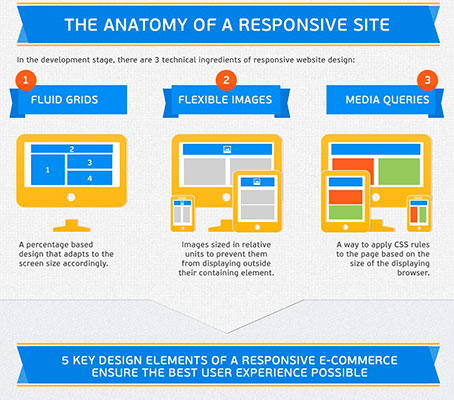Fundamental Elements Of Web Design: Guidelines For Creating A User-Centric Site
Fundamental Elements Of Web Design: Guidelines For Creating A User-Centric Site
Blog Article
Created By- improve seo
When it pertains to site style, making certain user-friendliness is crucial. From responsive design to streamlined navigating, every aspect plays an important duty in producing a website that caters to your audience's needs. But what concerning the finer details that can make or break an individual's surfing experience? Keep tuned as we reveal some often-overlooked ideas that can raise your site's functionality to the following degree, making it truly attract attention in the digital landscape.
Relevance of Responsive Design
Receptive style is a critical aspect of modern-day website growth. Ensuring your website is responsive means that it can adjust to different screen sizes and devices, offering a smooth experience for individuals.
With the increasing use of mobile phones and tablets to access the net, having a responsive design is important for reaching a wider target market. It assists in boosting individual experience by making your website very easy to navigate and keep reading any kind of gadget.
In addition, responsive design can favorably impact your search engine rankings, as search engines like Google prioritize mobile-friendly sites. By having a receptive style, you're likewise future-proofing your internet site, as new devices with differing display dimensions continue to emerge.
Simplify Navigating Structure
To enhance individual experience and assist in easy accessibility to details on your web site, enhancing the navigating framework is vital. When developing your site, focus on creating a clear and intuitive navigation food selection that aids visitors discover what they're trying to find swiftly.
Restriction the variety of food selection things to the fundamentals, organizing relevant web pages together to stay clear of overwhelming users. Use detailed web design that plainly indicate the web content of each page, making it less complicated for individuals to recognize where each link will certainly take them.
Think about applying dropdown food selections for subcategories to prevent cluttering the main navigation bar. Furthermore, include a search bar plainly on the web page for users that choose looking for details details.
Prioritize mobile responsiveness in your navigating style to make sure simple accessibility on all gadgets.
Optimize Web Page Load Speed
Improving web page tons rate is crucial for keeping visitors on your website. Slow-loading web pages frustrate individuals and can bring about high bounce prices. To enhance page load rate, start by enhancing photos. Press photos without compromising high quality to decrease their documents dimensions.
Furthermore, enable browser caching to keep frequently accessed resources locally, quickening lots times for returning visitors. Minify CSS, JavaScript, and HTML data by removing unneeded characters, comments, and formatting, enhancing tons speed.
Consider using a content distribution network (CDN) to disperse your web site's material across several servers worldwide, minimizing latency for customers accessing your site from various locations. Last but not least, restrict using third-party scripts and plugins, as they can substantially impact lots times.
Final thought
In conclusion, by including responsive layout, streamlining navigating, and optimizing page lots rate, you can develop an user-friendly website that attract a bigger audience and improves individual experience. These essential elements make sure that visitors can conveniently accessibility and browse your site throughout various devices, leading to increased involvement and contentment. By concentrating on these vital facets, you can construct a successful website that maintains users returning for even more.
